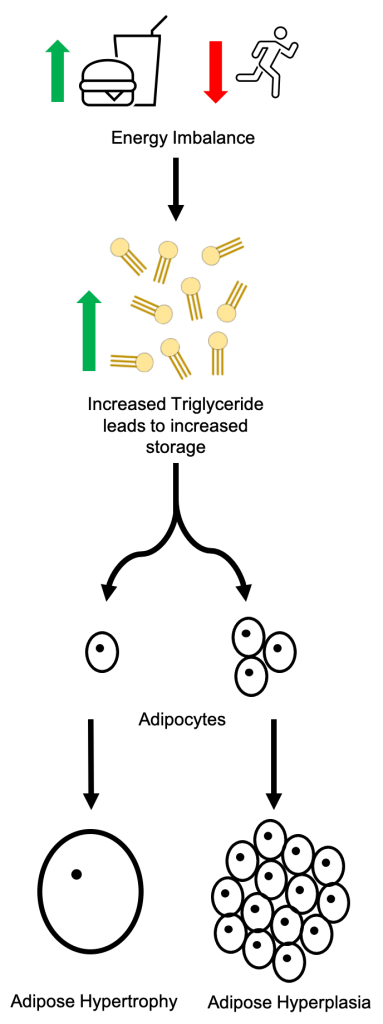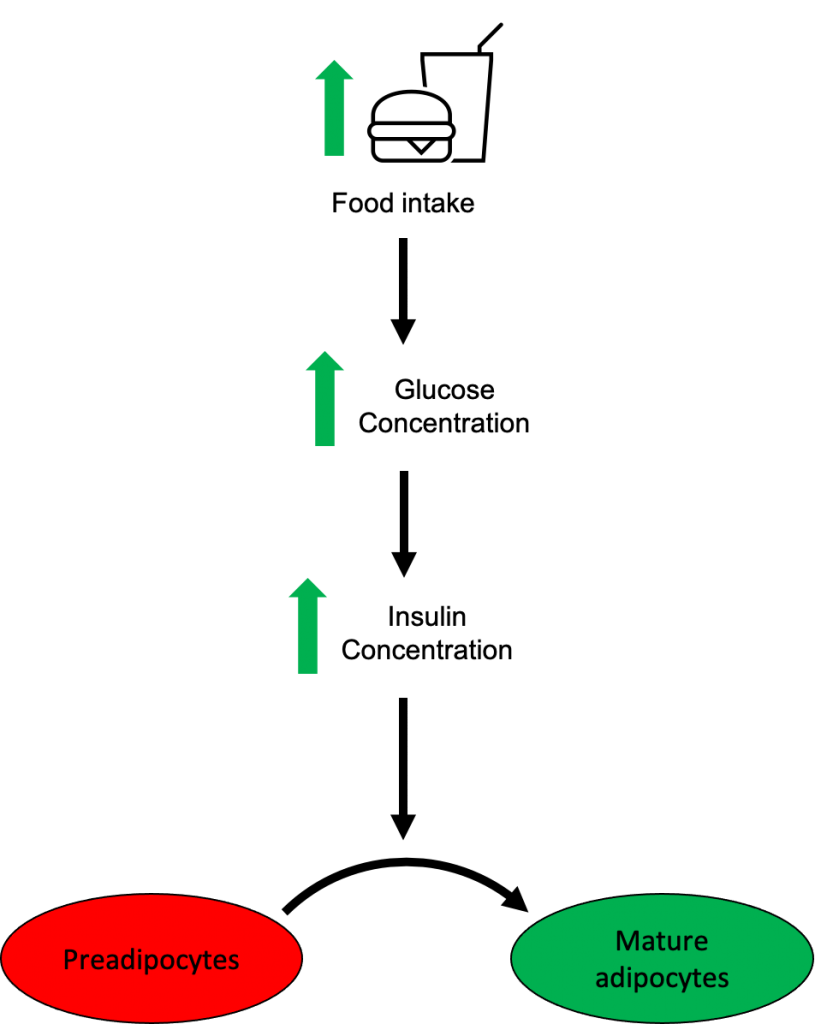How does Overeating lead to Adipogenesis?
A Brief Insight into the consequence of Energy Imbalance that leads to adipose hypertrophy and hyperplasia (fat accumulation).
From a lifestyle factor perspective, obesity can be credited to the prolonged imbalance between overconsumption and under expenditure of calories. The excess energy in the form of fatty acids and glucose can be stored in the adipocytes of white adipose tissue as triglycerides and glycogen respectively (adipocytes mainly store fats, but do have low levels of glycogen storage) (16). The increase of triglyceride storage results in adipose hypertrophy and adipose hyperplasia. Adipose hypertrophy is an increase in the size of adipocytes. Adipose hyperplasia is an increase in the number of adipocytes otherwise known as adipogenesis.

Adipogenesis seems to be controlled in two stages: the proliferation of adipocyte precursors known as preadipocytes, and its differentiation into mature adipocytes that are identified by its ability to secrete adipokines (17). The regulation of adipose hypertrophy and hyperplasia has not been greatly understood; however, it has been suggested that increased presence of insulin circulating in the blood stimulates the differentiation of preadipocytes into mature adipocytes resulting in hyperplasia (17).

Adipose hypertrophy is caused due to an increase in lipid droplets in the cytoplasm of adipocytes (18). Hypertrophic adipocytes are able to further stimulate adipose hyperplasia through paracrine signalling. This is due to an increase in the release of tumor necrosis factor (TNF1α) and insulin growth factor (IGF1) that is accompanied with adipose hypertrophy (17).
An increase in TNF promotes insulin resistance, further prompting the intake of food (19). TNF is a pro-inflammatory cytokine that phosphorylates the inhibitory serine sites of the insulin receptor substrate that decreases insulin signalling (pathway can be seen here).
IGF1 plays a role in the progression of the cell cycle and mitogenesis of many cells in the body including adipocytes, hence it is involved with the promotion of proliferation and mitosis of adipose tissue (20).
Therefore, the continuous overconsumption and under expenditure of calories leads to the continuous adipose hypertrophy and hyperplasia. This is the accumulation of fat and an increase of its mass.
Recent Comments